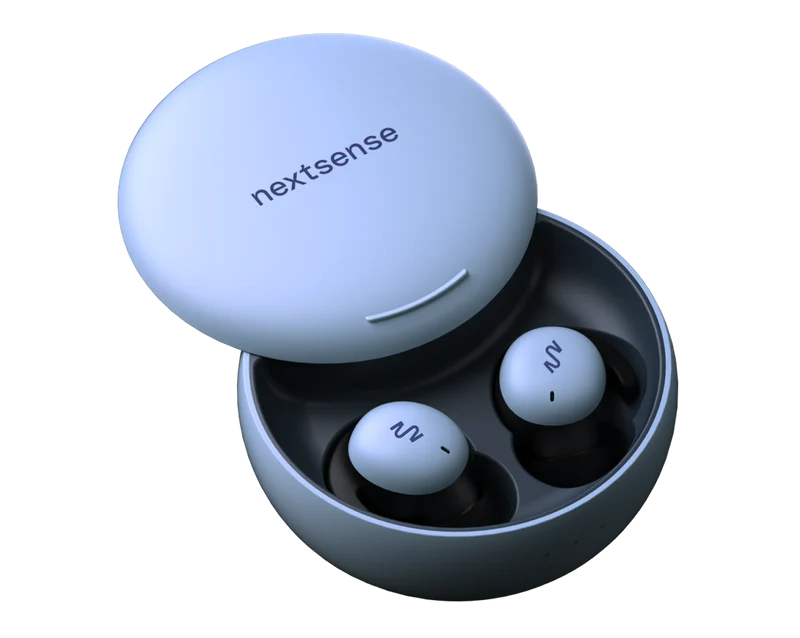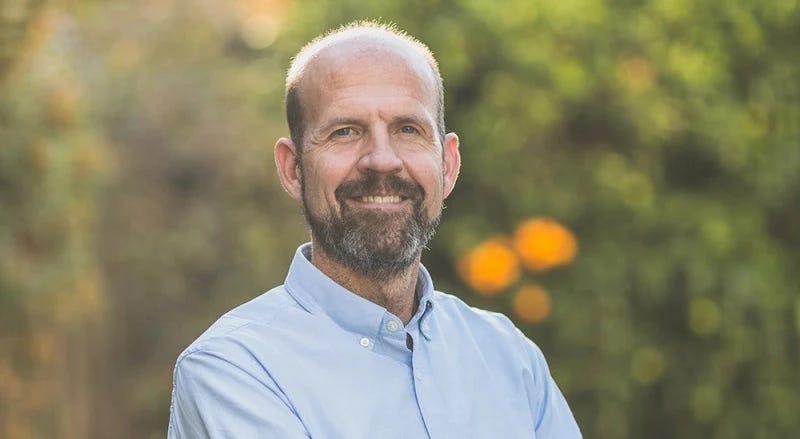Satori Neuro: NextSense is one of Satori Neuro’s newest portfolio companies, and we’re really excited about that. Could you tell us what your team is up to?
Jonathan Berent: We’ve been building the next generation of wearable technology, starting with Smartbuds. These do everything your regular earbuds do—you can listen to your podcasts and music—but while you do that, they read and decode your brain waves. Just like a smartphone, Smartbuds can be used for many things, and the first thing we’re doing is helping people to sleep. Even if you are a side sleeper, Smartbuds are designed so you can wear them comfortably through the night.
Brain waves are the most accurate way to evaluate sleep quality, so that is the first thing we are bringing to market, but we believe we can actually make sleep better, so that’s next. There are some well-researched frequencies that enhance deep sleep, the most restorative part of your sleep. In fact, the sound patterns deepen those slow brain waves and boost the neural benefits so much that people perform measurably better on cognitive tests the next day.
SN: When people think of EEG monitors, they may be thinking about a whole cap full of electrodes all over the head. So how can something that’s just sitting at two points – the ears – tell what is happening, for example, at the front of the brain?
JB: The brain states we’re interested in are the macro states, so you can observe them from virtually anywhere along the scalp, including the ears. Meaning, even if a particular rhythm starts at the front of the brain—like the delta waves during sleep—they propagate back until you can detect them in the ear. Similarly, if somebody wants to use Smartbuds in order to measure their focus you’d be able to see the higher-frequency waves—beta and then gamma—as they also pass over the ear. This is something we’re really hopeful about for future features—measuring focus and even enhancing it with sound.
SN: You mentioned using certain sounds frequencies can enhance deep sleep. How does that work?
JB: Researchers Giulio Tononi, Hong-Viet Ngo and others found that by waiting until someone is in certain phases of deep sleep and then playing bursts of pink noise, you could increase the depth of the slow wave. We’ve developed our own proprietary version with a formula for the spacing between pulses that best enhances the depth of people’s sleep. Of course, you have to make sure they’re not too loud, so the person doesn’t wake up.
In our study of 29 subjects, 25 saw an increase in slow wave activity, with some subjects seeing more than 50% improvement in slow wave depth. This means better reaction time for athletes, or better memory recall for students. Our algorithm learns each user's circadian rhythms in about 10 nights, then adapts nightly.

SN: What was your own journey to taking on this particular challenge?
JB: I’ve always been passionate about sleep and dreams, and the mind’s potential in general. Then seven years ago, there was a new opportunity at Google where even non-engineers could pitch a business idea. I teamed up with a firmware engineer and someone with a PhD in sleep and circadian rhythms, and we pitched.
They initially turned us down, which was heartbreaking. But it turned out they had really liked it, they just weren’t expecting a hardware idea, so they referred us to Google X. This was 2017 and I was running on intuition and a desire to learn, so when I eventually went fulltime on this idea, I went to all the conferences, read all the books and immersed myself in the research and technology. Seven years later, that intuition has evolved into NextSense and our commitment to harness neuroscience responsibly to help people thrive/live life with more joy, energy, and purpose.
SN: The new developments we’ve seen lately in sleep technology often give co-sleepers new powers to control their environment, whether that’s setting the temperature on their side of the bed or elevating it so that they can read beside a sleeping partner. This product seems to extend that by building a separate sound environment. How are your testers experiencing that?
JB: The most low-hanging fruit to solve is what they’re calling the “bedroom divorce”. One partner snores so loudly that they get sent into another room. Even earplugs often don’t work, but earbuds that play white noise successfully mask it to create sound isolation that feels like being in your own bubble. Our roadmap includes selective-pass-through so parents hear what matters (e.g., a baby crying) without disrupting sleep.
People are surprised by how effective sounds like rain or white noise can be, but it’s just tapping into our evolutionary biology: When the night went completely silent, it wasn’t actually a good thing because it meant the animals that usually rustle around had frozen with the approach of a predator. Ambient noise calms us by signaling an environment that isn’t in an alert state.
SN: What does the next year hold for NextSense?
JB: Our Beta will be launching on June 16, so this will be the first time people outside of NextSense friends and family are using the device, sleeping with it, and giving us feedback. We heavily prioritized pre-orders for our beta program, and we still have some spots left. After adjusting for what our beta customers tell us, we will ship in Q3 in time for the holidays. We also aim to roll out our first daytime feature in 2025 and have more conversations with potential partners.
SN: There’s been a wave of consumer interest in tracking our own data and understanding ourselves, but now having the same technology be able to act on those measures seems like the difference between using a thermometer versus an oven. As we gain control over our brain states more generally, in what ways do you see life being different for our children?
JB: I think when you have the ability to monitor the brain, it becomes like a mirror. If you want to go to a ball, versus go to the beach, you might dress up differently, in clothes you don’t normally wear every day. So you go in front of a mirror to see if the clothes fit. A mind mirror would essentially be able to do that. Hey, am I in a focused state? Am I in a sad state? What if I want to change that? I do think it will be possible to change our mood as easily as we change our mind, which would enable people to better regulate their emotions and deal with adverse situations in a more healthy, skillful way, all with less self-sabotage. That’s the essence of NextSense: giving everyone a sixth sense to better understand and even tune their own mind.




